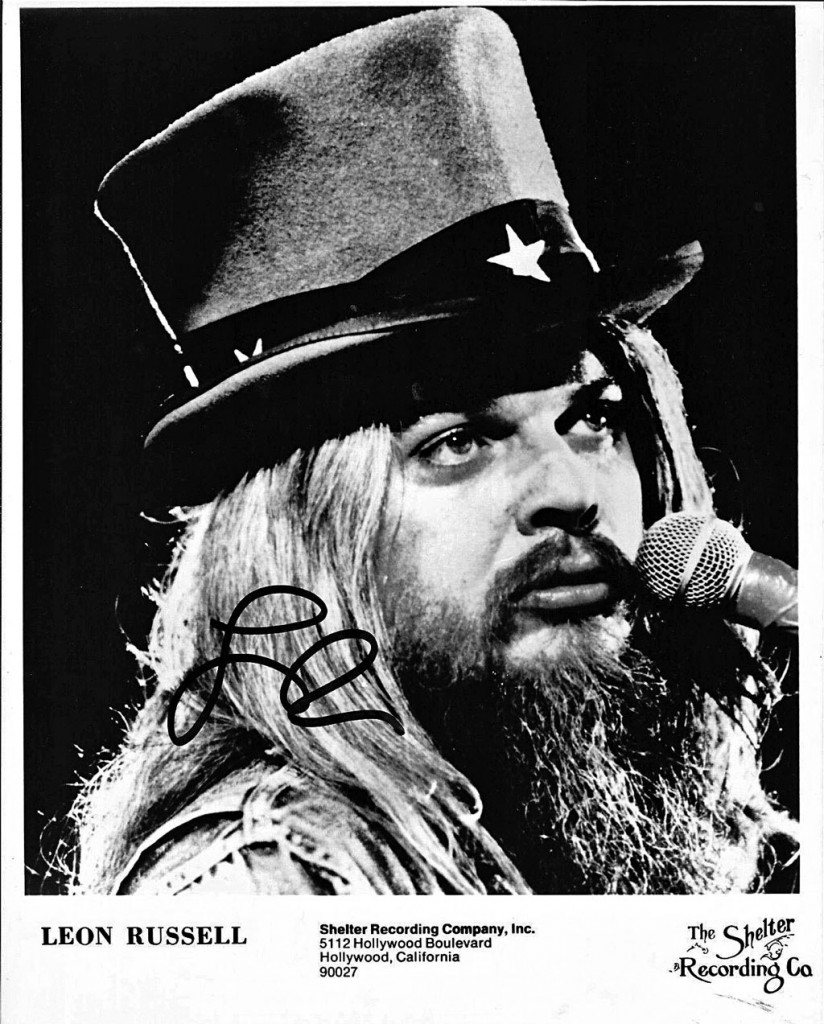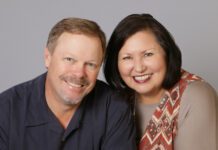
Although I’m well into my fourth decade of writing about music, especially Oklahoma’s music, I’m reminded regularly how much more I have to learn. My most recent schooling came courtesy of a new DVD, one that combines footage from three concerts given by Leon Russell and his band during the 1972 tour that yielded the three-LP Leon Live album.
Released by Deep Freeze Films (deepfreezevideo.com), the disc made me realize that while I’ve long been doing my best to understand and catalog all the sounds swirling around Tulsa that Leon plucked out of the air and blended into his own unique style, I’ve until now overlooked a certain form of oratory indigenous to our part of the country.
The DVD, simply titled Leon Russell, carries the subtitle The Best of the Leon Russell Festivals. (A second subtitle is Out of the Deep Freeze – the Lost Reels, which we’ll get to shortly.) And its first 15 minutes is propelled by monologues from Leon that come blazing out of the classic TV-preacher playbook. In a long opening medley that combines the chorus of the Staple Singers’ 1972 hit “I’ll Take You There,” the old Coasters B-side “Idol with the Golden Head,” the hymn “I Serve A Living Savior” and the classic riff from the Bobby Bland bar-band standard “Turn on Your Love Light” (which morphs into Bob Dylan’s “The Mighty Quinn”), Leon sells his songs with evangelistic zeal and authentic-sounding exhortations, complete with the gasps between phrases, the explosions of words, the falling emphases at the ends of sentences.
He informs audience members that they need to prepare for a religious experience – getting their money back if they don’t want one – and later explains that he’s preaching about the power of music, “not trying to sell anybody on religion.” It’s an amazing performance that owes a great debt to the radio and television hellfire-and-thunderation orators who permeated the airwaves of 1960s and ’70s Oklahoma.
Chalk up one more sound that deeply influenced Leon Russell and his music.
The words, as you might imagine, complement the songs, delivered by Leon and a big band that includes his fellow Tulsans Chuck Blackwell on drums and Carl Radle on bass. The three backup singers, Phylliss and Maryanne Lindsey and Nawasa Crowder, along with the group’s second piano player (and vocalist) Patrick Henderson, would go on to record an album as Black Grass, released on Leon’s Shelter Records in 1973, the same year as Leon Live. Others in the band include guitarist-vocalist Don Preston, guitarist Joey Cooper, organist John Gallie and percussionist Ambrose Campbell. Shelter Records’s D.J. Rogers comes out to sing during the encore.

“This is a trip back in time to Leon at his peak,” says California-based filmmaker Jeffery Haas, the man behind the DVD and Deep Freeze Films. “It is possibly the finest live concert video he’s ever done. He’s young and strong and full of vitality and passion and fire.”
The genesis of the disc came about following Leon’s star turn in the 1971 documentary Mad Dogs & Englishmen. It was a film that dealt with the 1970 tour of the same name, ostensibly a star turn for vocalist Joe Cocker. According to many contemporary observers and reviewers, however, Leon, the tour’s bandleader, stole the show.
“I think the thought was, ‘Look what Leon did [in Mad Dogs & Englishmen]. This man deserves his own movie, his own spotlight,’” Haas says. “I don’t know if it was Leon’s thinking. But it must’ve been someone’s.”
Unfortunately, the subsequent documentary never got even close to theaters, or even to a finished version. The whole story, in exacting detail, can be found online at deepfreezevideo.com/deepfreezestory.html. Here’s an encapsulated version:
In the wake of Mad Dogs & Englishmen, a real-estate developer named Gilman Fera ponied up $500,000 to finance a similar rock documentary on Leon, intended to play in theaters. The idea was to shoot on videotape, then convert the masters to film, a process that had been utilized on the 1964 rock musical The T.A.M.I. Show, among other features. Footage was shot at Leon shows in Long Beach and Anaheim, California, and Charlotte, North Carolina. There were, however, so many technical problems associated with the taping that the project died.
Fera, disgusted, shoved all the footage into a non-working freezer (hence the Out of the Deep Freeze subtitle on the DVD) and there it stayed for years, forgotten, until one day when Fera’s nephew, who was helping his uncle move, discovered it. He began hauling the tapes around L.A. to see if they could be salvaged – without much luck. As Haas notes, the tapes spent “three years in the trunk of a Mercedes during California summers.”
Eventually, Haas, who was then working as a videographer in Southern California, and the nephew, Alan Pacella, connected through a mutual friend. A deal was made, and suddenly Haas was looking at 13 hours of glitch-laden tapes from many years earlier. One silver lining: Each of the three shows represented were pretty much the same.
“When I watched the original tapes, it seemed like their set lists were almost identical,” he says. “He [Leon] was recording the Leon Live album live in Long Beach, and then he was doing the same show in Charlotte, in Anaheim, in every city on the entire tour.
“Ninety-five percent [of the DVD] is Long Beach and Charlotte, and about 5 percent is Anaheim. The reason why is that the Anaheim performance really isn’t that great. Plus, I don’t have the original 2-inch reels for it.”
After countless hours of work, Haas brought the first version out in 1989 as a VHS tape. A DVD followed in 2005. But then, Haas – who was living in Texas at the time – was contacted out of the blue by a man in Malibu, California. It turned out he had a second set of tapes from the original project, given him by the now-deceased Pacella as collateral on a $5,000 loan. By working extra video jobs, Haas finally raised the money to buy back the tapes. He then took them to DC Video in Burbank, California, to undergo a restorative process called baking.
“When you bake a tape, you have to heat it up, to get the oxides to re-bind with the Mylar,” he says. “Baking these tapes, and cleaning them, and praying that they would recover properly was as arduous as any process we did.”
Even with the benefit of DC Video’s vintage players, restoring the tapes was anything but a sure thing. But while he wasn’t particularly optimistic, owner David Crosthwait – who, as it turns out, had worked with Leon at his California-based Paradise Studios – vowed to do his best.
“At first, he said, ‘I don’t think it’s going to work. The machines are clogging,’” Haas says. “Then, all of a sudden, one morning he says, ‘Leon has been saved. The reels are looking good.’ It was a get-down-on-your-knees-and-cry moment of relief.”
Now, with the brand-new release of the definitive DVD version, Haas gives lots of credit to both his wife, Karen (“who convinced me to revive the project”), and Crosthwait for the finished product. The clarity of the images and quality of the sound convincingly retrieve Leon and his musical cohorts from all those years ago, caught in the act of creating a Tulsa Sound time capsule that remains fascinating and deeply entertaining some 45 years after the fact.
The 127-minute Leon Russell: The Best of the Leon Russell Festivals can be ordered for $24.95 from the website deepfreezefilms.com. The site also includes bonus footage.


























